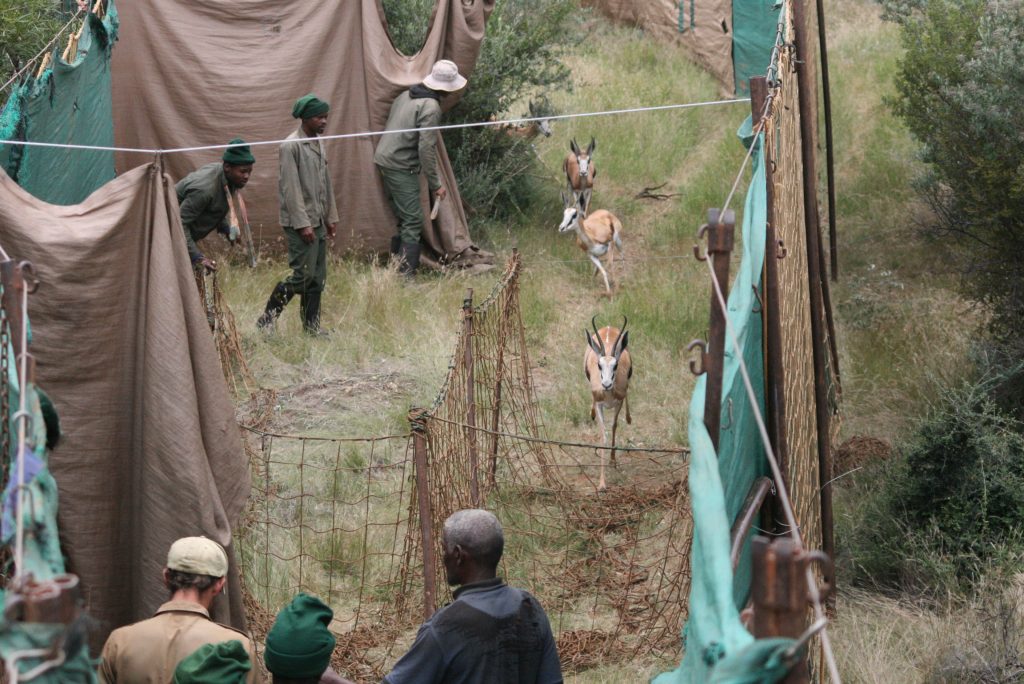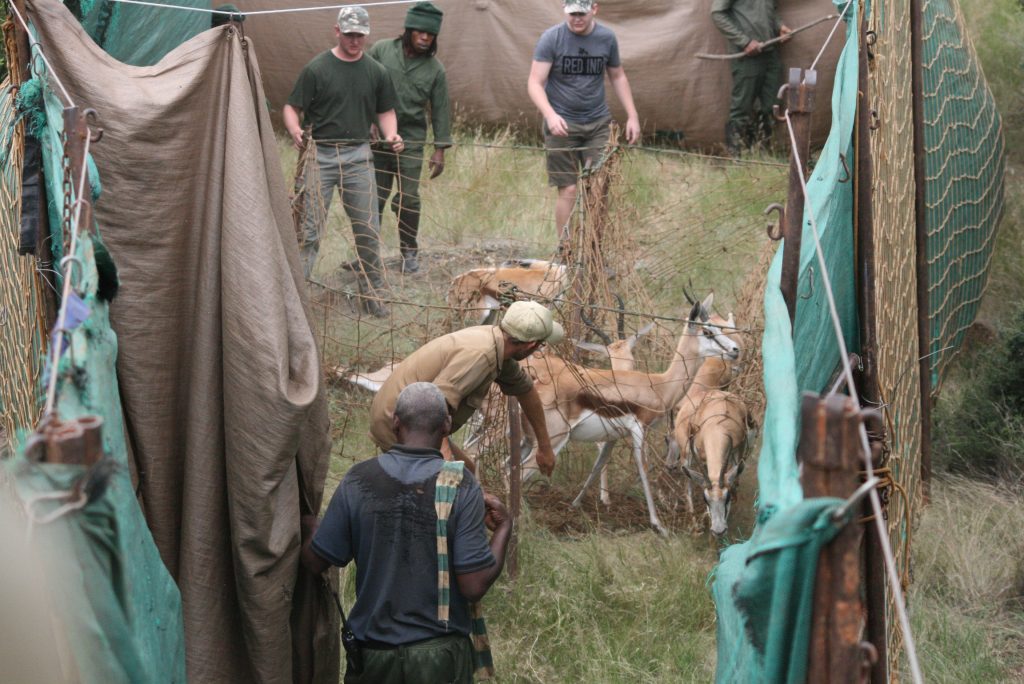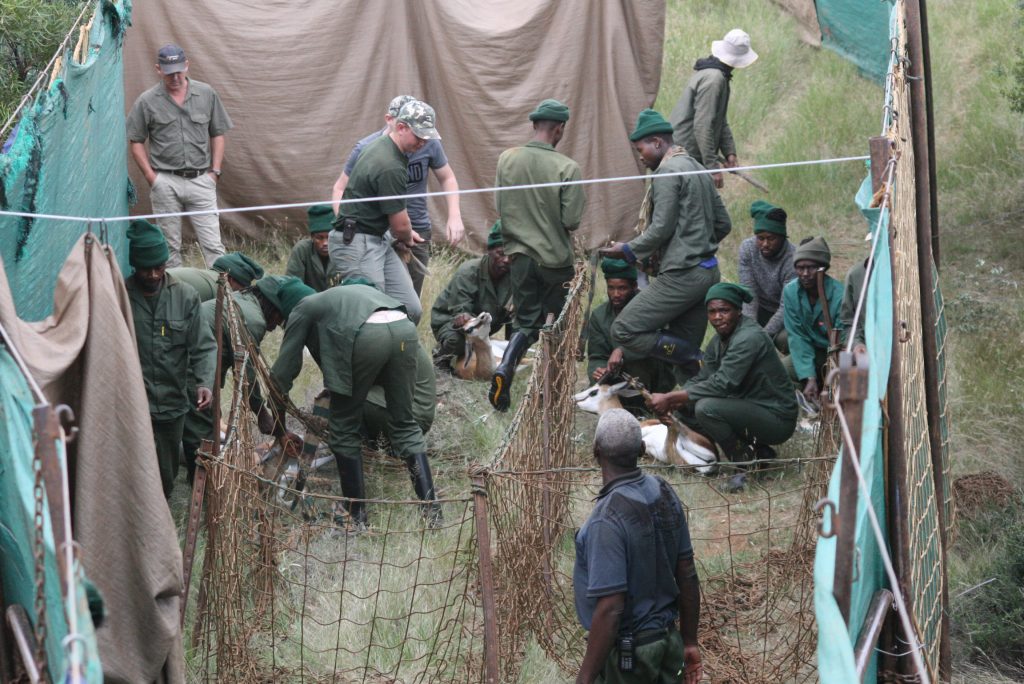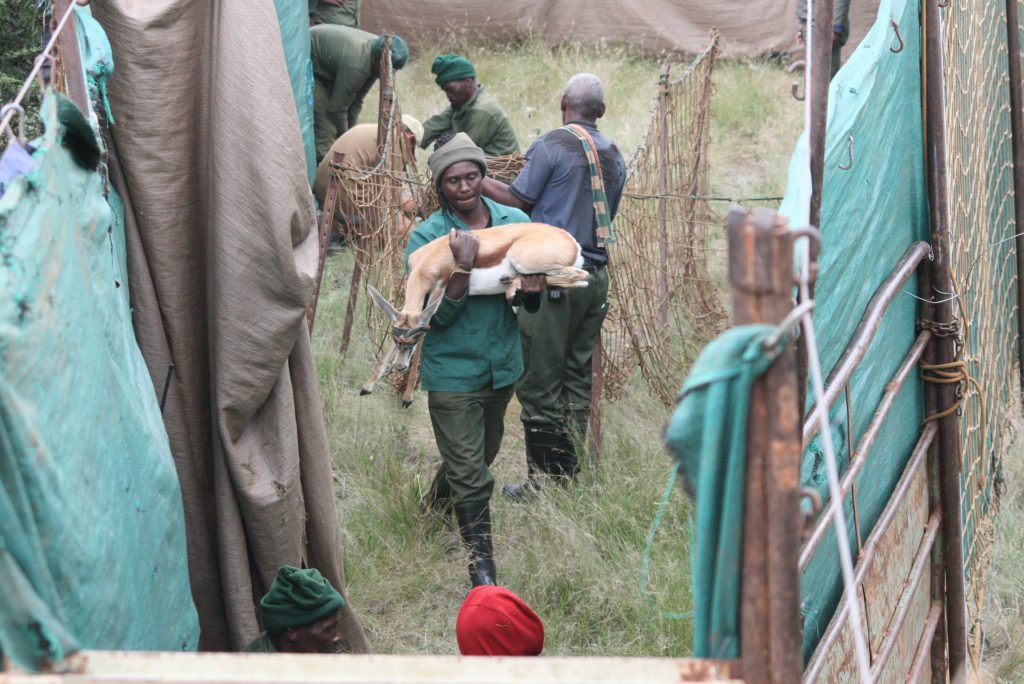One of the biggest challenges in game capture is to keep animals alive during hot weather conditions, especially springbuck. Apart from the challenge to keep them alive, it is also fairly hard to catch them in certain instances. We often catch on farms with nowhere to hide the capture boma (no bushes or blind rises). Furthermore, springbuck are very clever animals that quickly sense if something is out of place. Therefore, we have had to find new ways to outsmart them.
Everyone has their own method of catching game and certain techniques work better for some wildlife capture teams compared to others. Today we would like to share some of our techniques. This is not to say that our techniques are the best or that it’s suitable for everyone. By sharing our ways of capture, we merely hope to inspire new ideas which may help to decrease mortality rates during captures.
Helicon prefers using sail/plastic bomas instead of net bomas. It can be more difficult to make it work at times on an open farm, but in our experience, it seems that fewer animals get hurt this way. The use of vehicles and motorbikes that assist the helicopter when chasing animals often play a big role in the success of a capture.


We always try to catch springbuck in the early morning before it gets too hot, although in certain areas like the Northern Cape, temperatures may rise early in the day. If we have a herd in the boma and we can see they are exhausted and hot, we rather let them rest in the boma to cool off and catch their breath before we start loading them onto the trucks. The loading of springbuck includes herding them forward little by little and catching each one by hand in order to be injected with a sedative before we load them onto the trucks.
As soon as a springbuck is caught, we cover their eyes with blindfolds and inject them with the sedative as soon as possible. It is also important to wait for the sedative to take full effect before taking the animals into the truck, as they will start jumping and wake the others, which can sometimes cause complete chaos and may result in broken horns etc. All those involved in the handling and general process should remain as quiet as possible during the loading.
It can be challenging sometimes to choose the correct dosage to inject. If you inject too little, they start jumping around in the truck. If you inject too much, they could succumb from the sedative. Therefore, the person who is responsible for injecting the animals should be extremely observant with regards to the size and condition of the animals, how tired they are, temperature etc.


Below is a video illustrating how it’s done.
Here follows an account of how springbuck were sedated, including injury rates on a hot day in the Kimberley area:
DAY 1
Total number of springbuck caught and loaded onto trucks: 151
Mortalities during capture: 0
Total offloaded without significant injury : 146
Out of the 151 springbuck caught, only 5 were not offloaded.
Therefore, from capture until offloading, we observed a 3% mortality rate in spite of it already being 30°C + at the time when the last animals were loaded onto the trucks. Thereafter, the trucks waited for another hour in the sun as we still had to sort them and move them around in the trucks (this is not recommended but in this instance it cold not be avoided).
Furthermore, due to distance, almost half of the springbuck were on the trucks for more than 24 hours before they were offloaded.
Dosage:
Adult females – 0.3ml Drug 1 + 0.3ml Drug 2 (Intravenous)
Adult males – 0.4ml Drug 1 + 0.3ml Drug 2 (Intravenous)
With smaller animals, the dosage was estimated in terms of body mass.
When it got really hot, we reduced the dosage with 0.05ml on both drugs. For example, adult females were then injected with 0.25ml Drug 1 + 0.25ml Drug 2 (Intravenous).
We believe that the relatively low injury rate observed during this capture despite all the factors working against us, was due to the fact that we mixed two different drugs instead of just using one drug as it’s usually done. It should be mentioned that on cool days we still use Drug 1 only. We now use this method of mixing the two Drugs on hot days as it seems to work well and has been proven to work well many times since.